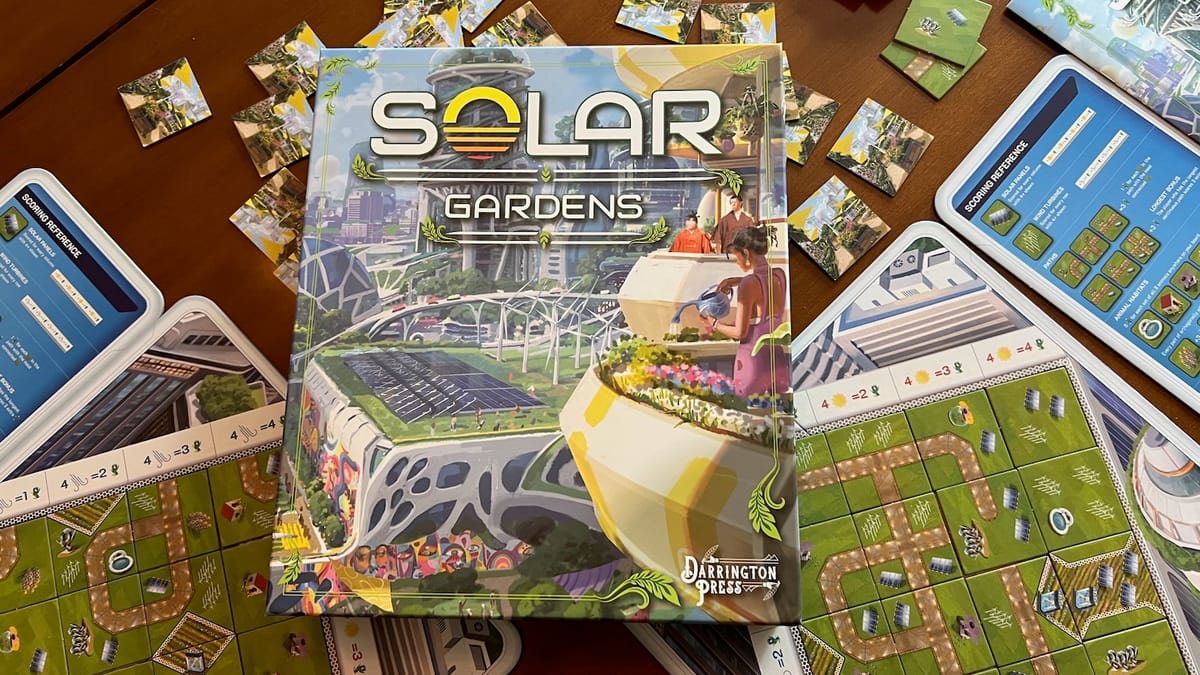
As our world becomes increasingly urbanized with cities and buildings expanding up and out, the need for green space increases. Across many cities, developers are creating gardens on the tops of skyscrapers allowing spaces for residents to grow food and get a taste of nature in the midst of a city. Solar Gardens takes the concept and puts it into a relatively simple game.

Solar Gardens is a 2025 release from Darrington Press, created by Alex Cutler and Eric Slauson. In Solar Gardens, 2-5 players will take control of their own rooftops and will draft tiles to place on their boards creating combinations of symbols to score points. After 16 rounds players will score their points; the player with the highest score winning the game.
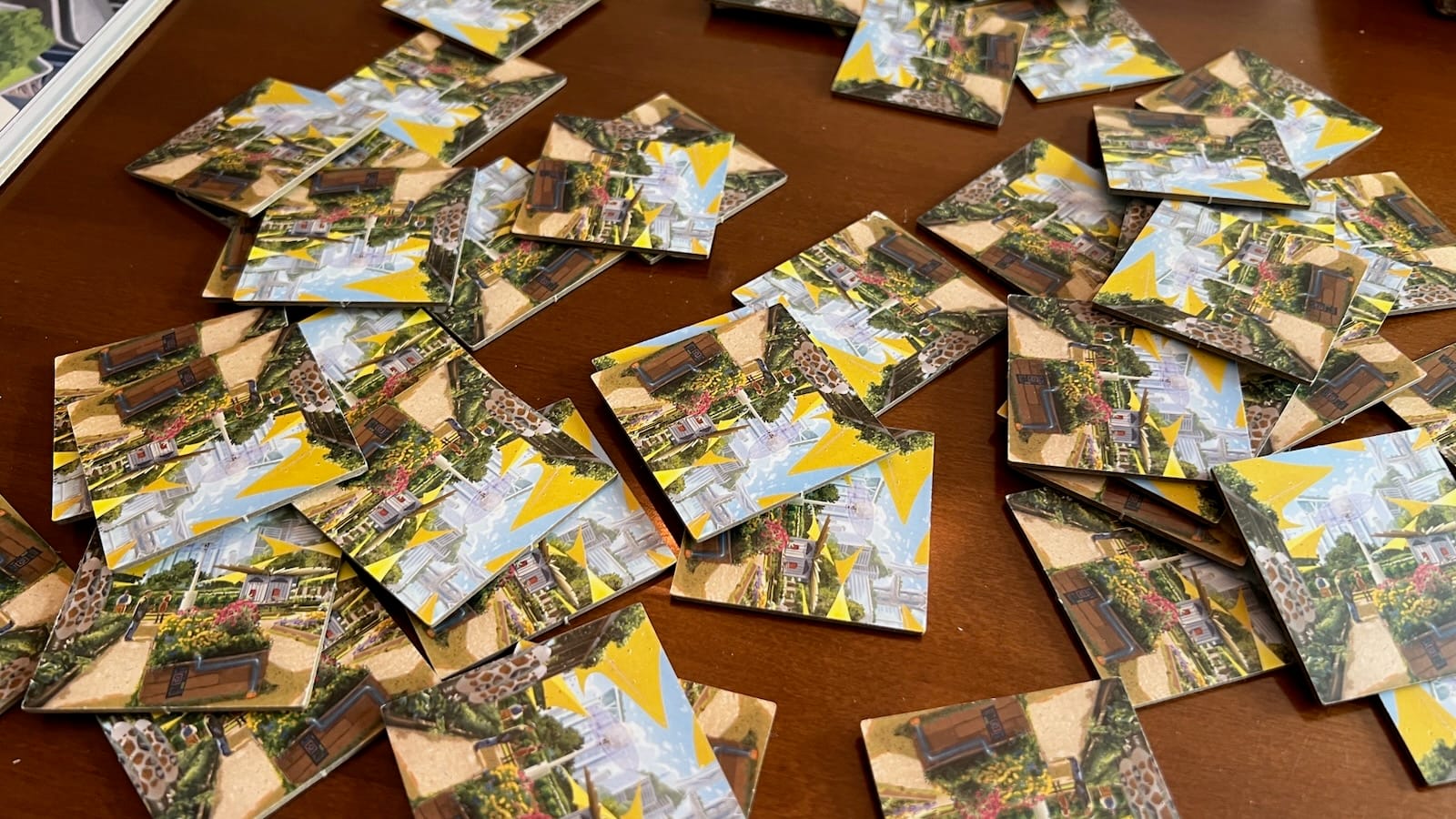
Each round the starting player will take a stack of tiles from a common supply equal to the number of players plus one. They will then flip the top tile of the stack and choose to take the tile or pass it clockwise around the circle. Once claimed, or the last player decides to pass the tile, the starting player will flip the next tile. The last player in the sequence can only pass once, so if another tile makes its way to them, they must take it. Once every player has a tile, they can place them anywhere on the 4x4 grid of their rooftop. For the next round, the first player token will shift clockwise to the next player.
Scoring Conditions
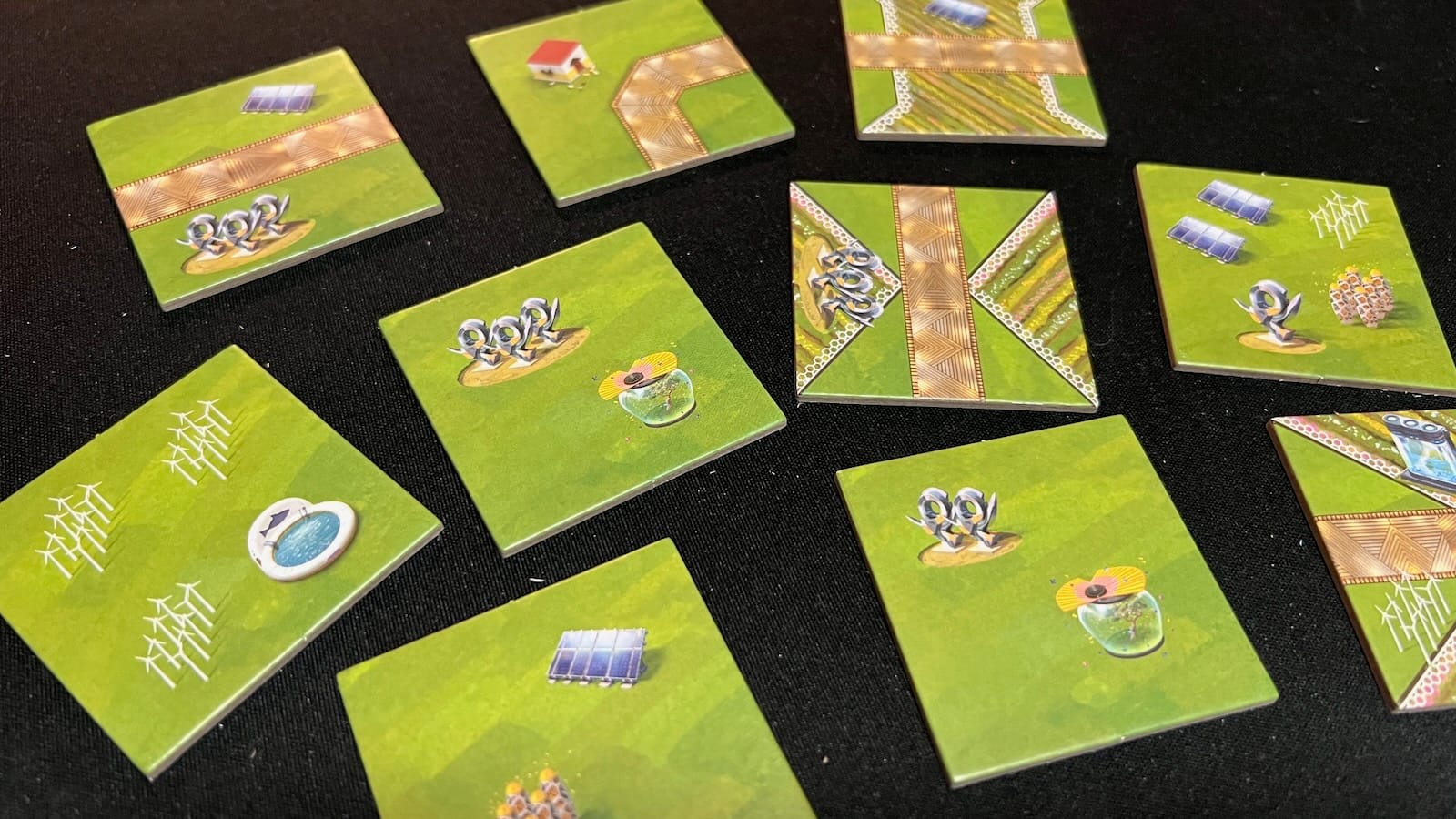
Each tile features one or more different types of symbols that will each score differently depending on their location relative to their position on the roof and to other tiles.
- Wind Turbines (Rows): Each row will give players a number of points (1-4) if players have four or more wind turbines in the row.
- Solar Panels (Columns): Each column will give players a number of points (1-4) if players have four or more solar panels in the column.
- Animal Habitats: The habitats come in five varieties, scoring a player five points if they have one of each. Matching habitats on neighboring tiles will score three points each connection.
- Paths: Players will score one point per tile of their longest continuous path and the player with the longest continuous path will score three bonus points.
- Flower Beds and Water Filters: Flower beds are enclosed by fences and players will try to connect fences to create large beds. To score, players must also make sure one to two water filters are featured on their enclosed beds. Each tile in an enclosed bed and one water filter will score a point with two water filters scoring two points a tile. A flower bed with an open side will half total points.
- Sculptures: These are art pieces scoring 1-3 points depending on the symbol.
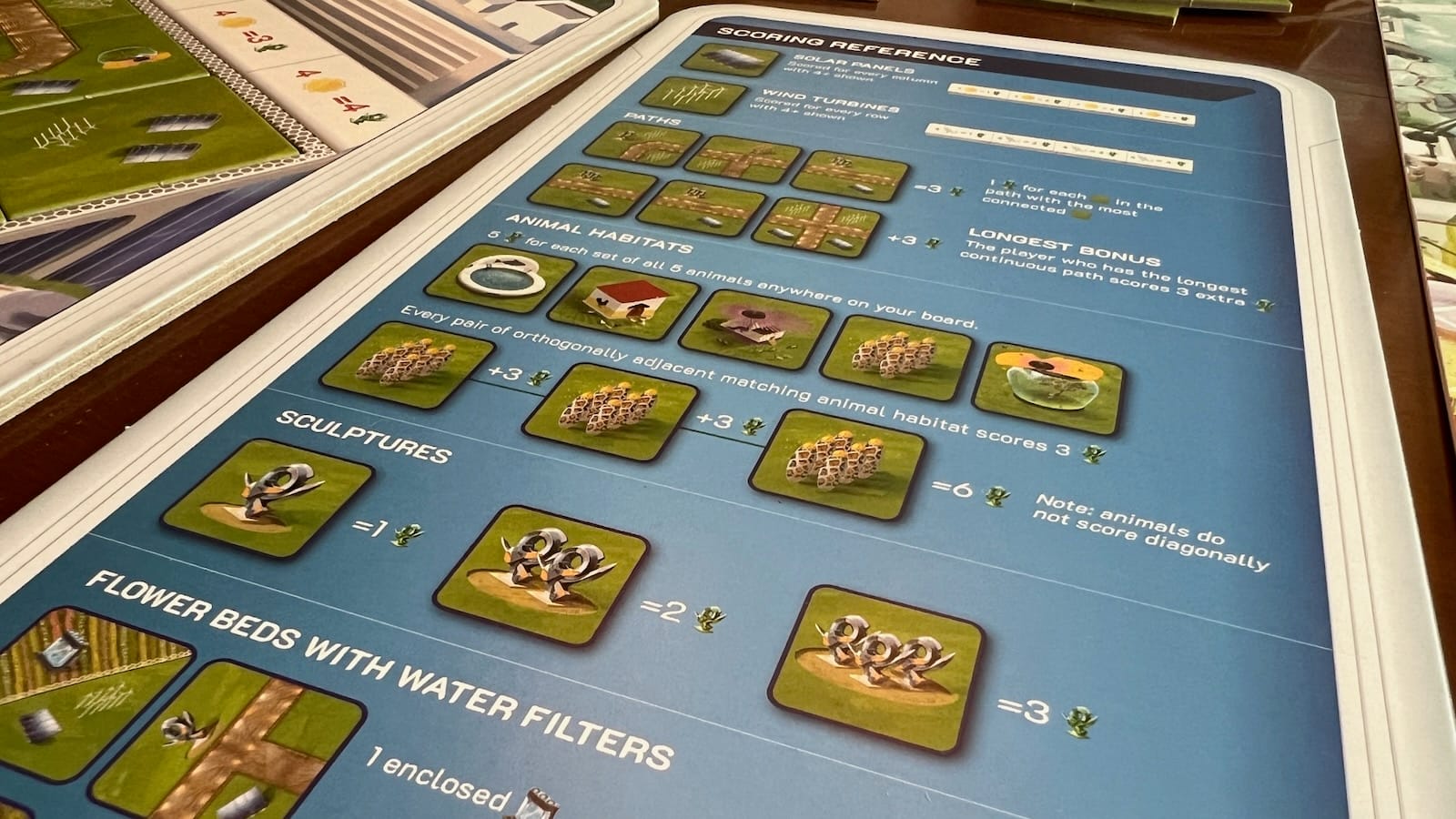
After all tiles are placed, players will use the included scoring pad to add up their points based on the scoring conditions for each symbol. The highest score wins the game for having the most utopian garden.
Overall Thoughts

The artwork featured in the game is warm and inviting and is done in an elevated chalk art style. The artist Daniel Clark and graphic designer Bryan Weiss weave the symbols and artwork nicely throughout the game. The player boards are large and dual layered to help hold the tile pieces neatly as the rooftop fills up. Each player is also given a large player aid that explains each of the scoring conditions. The rulebook is easy to follow, but seems a little disjointed in how it was put together. A great scene setting letter from a fictional “Phoenix” to his grandfather is found on the last page and seems like it should go up front to help set the stage for what is to come. The game summary and components also come after the setup instructions, which seems out of place. The overall production seems too big for the lightweight nature of the game. At first glance, I might think that I was in for a heavier economic tableau builder rather than a light tile drafting game. The game will take up a lot of shelf space for something that could easily be scaled down to a smaller, more portable box. The storage for the game is also lacking. The game includes 90 tiles, 5 player boards, and 5 player aids with one central channel to hold them all in. To store the game, the tiles need to be wedged between the boards and can still come loose in transport. Some of the tiles were also seeing some fraying after only a few games played through.
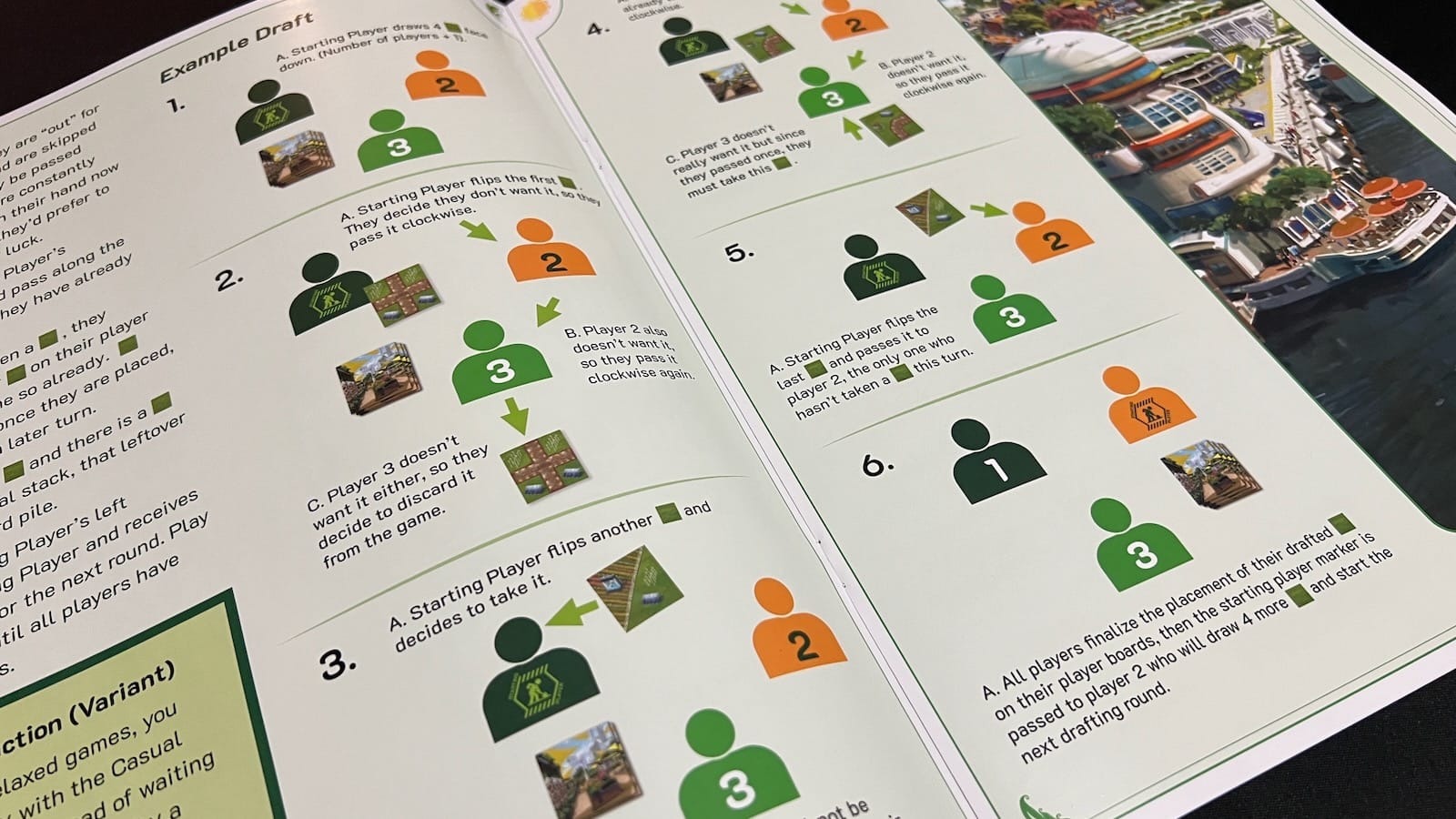
The gameplay of Solar Gardens is pretty easy to pick up and teach. The hardest thing to grasp is the drafting system and when a player is allowed to pass versus when they must take the tile presented to them. The game is definitely more interesting the more players you add as there is more tension in the draft. There is also a little push-your-luck element to waiting for a tile featuring the symbols you may want and whether a player might snag the desired piece. The scoring system is easy to understand and the player aids are well designed to remind players of the rules. This game would be one to use when teaching younger players the drafting mechanism and scoring combinations.
Solar Gardens
Good
Solar Gardens is a lightweight drafting and tile placement game that would be perfect for growing board gamers to learn new mechanisms. A quick and easy family game for up to five players.
Pros
- Easy to teach and learn
- Quick playing time
- Welcoming artwork throughout the game
Cons
- Storage needs some work
- Game is physically big and light on gameplay
This review is based on a retail copy provided by the publisher.
